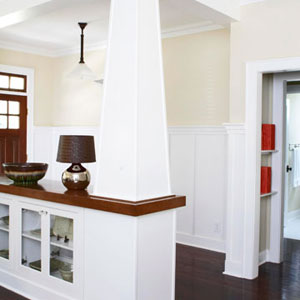Four Great Questions Before Downsizing Your Home
These are 4 great questions to ask before downsizing your home

1. What Are My Total Costs? Consider carefully the entire cost of downsizing. This includes factoring how much you will realistically sell your home for in today's market of economic uncertainty and prospective Gen-X and Gen-Y buyer unemployment, as well as what the rental or purchase cost of that downsized dream might be. Moreover, identify the hidden costs—from condominium fees and furnishing your new home to the potentially higher costs of living depending on where you relocate. For example, a warmer climate saves on heating costs, but will you pay a premium to stay cool? Likewise, urban living can be fun…but at a price.
2. Will I Downsize My Social Network? While you may be losing excess space, depending upon where you move you may also lose friends—or at least your number of interactions with them. Countless studies indicate that the chances of aging well are greatly enhanced by having a robust network of friends and family living nearby. Friends you can count on when needed, compared with those you can count online, often take years to make. Will your new home have good friends nearby? If not, will you live in your new home long enough to develop close relationships to share fun times today and possibly tough times tomorrow?
3. Will My Smaller Home Mean A Smaller Lifestyle? Changing places for the better means choosing a location that has the intensity and density of activities that makes the move worth the associated financial and emotional costs. What routines that shape your life today can you preserve, and what new activities will your new community provide, pushing you to remain engaged for a lifetime? There are 'basics' to consider as well: Are there transportation alternatives so that driving is not your only option, and are there a wide range of quality health-care services readily available?
4. How Long Can I Live There? Many baby boomers may choose to downsize to communities that are for retirees by name or in appearance. But just because a community has a large concentration of 50-plus residents, has “retirement” in its name or is conveniently located near a golf course doesn’t guarantee that it has been designed to enable you to age in place. Most of us do not want to think of the days when knees creak or health conditions make stairs and standing difficult, but those days do come for most in advanced age. Does your prospective downsized home have design features to enable you to live there a long time? For example, are there kitchen cabinets that are in easy reach, bathrooms and hall clearances that can accommodate a wheelchair, or a first-floor master bedroom? An exploratory study conducted by the MIT AgeLab of several communities and developments for the 50-plus age group in metropolitan Boston revealed that most did not have design features that would enable aging-in-place any better than the average suburban home. A conscious assessment of how long you plan and can realistically stay in your new downsized home is a key factor in assessing future housing options in retirement.
Boomers will be downsizing.....
The numbers are not clear, but the topic of baby boomer downsizing from larger home to smaller housing options features prominently in the real estate business news. The leading edge of boomers are now between 57 and 67 years old. With their lifestyles changing, many are rethinking where they want to live in retirement. Many boomers are empty nesters no longer requiring additional bedrooms or large backyards. Others are finding that home maintenance is either too much to manage or does not produce the pleasure it may have decades earlier. And, yes, some are considering smaller options that they hope will reduce their cost of living—for example, by being less costly to heat.
Downsized destinations consist of traditional retirement communities near beaches and fairways but also include a growing list of new options. Urban enclaves and college towns once dominated by young singles are now popular with older couples that desire smaller living spaces but a larger range of activities nearby. For those who like where they live but not necessarily the home they are in, there are a growing number of apartment or condominium options in the suburbs.
From Joseph F. Coughlin Market Watch
Feb. 20, 2013, 6:30 a.m. EST
Feb. 20, 2013, 6:30 a.m. EST
Comments
Post a Comment